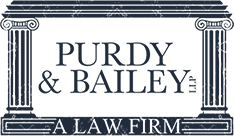According to a report by the Institute of Justice, cities begin 80 public projects per year that use eminent domain to take property from residents or business owners. “Our cities and states have become like real estate speculators, securing land owned by their own citizens on behalf of politically connected private interests,” said one of the organization’s officials, Scott Bullock.
If you've been affected by eminent domain in California, call Purdy & Bailey at (858) 360-7080 or contact us online today to schedule a courtesy case review.
What Is Eminent Domain?
Eminent domain is the government’s right to purchase private property to complete a public project. Ideally, the government will offer you an amount that reflects or exceeds the value of your property. The offer should compensate for the fact that you had no plans to let go of the land or building they want.
Unfortunately, eminent domain has a history of being abused and causing serious problems for property owners. The government does not always respect their rights, and many argue the system is inherently flawed in several ways.
What is Eminent Domain Abuse?
Eminent domain abuse occurs when the government or its entities seize private property for purposes other than genuine public use or fail to provide fair compensation to the property owner.
The following are common types of eminent domain abuse:
Private benefit: When eminent domain is used to benefit private individuals or corporations rather than the public, such as taking property to facilitate private development projects or to transfer it to a private entity.
Insufficient compensation: If property owners are not adequately compensated for their property, including failing to consider the true value of the property or not providing compensation for relocation expenses.
Lack of due process: When property owners are not given proper notice, opportunity to be heard, or fair legal procedures in the eminent domain process.
Arbitrary or discriminatory takings: When the government targets certain individuals or groups based on race, ethnicity, or other protected characteristics in the exercise of eminent domain.
Despite various legal safeguards and constitutional protections to prevent eminent domain abuse, it has happened numerous times in our country’s history – and can still happen today.
Here are five famous cases of eminent domain abuse in the United States:
- In the mid-90s, a widow inherited her husband’s commercial building in Las Vegas. He left this property to her so rent from tenants could fund her retirement. But the city claimed the area was blighted (i.e. poorly maintained) to justify its use of eminent domain, despite the fact that no one was actually sent to evaluate the area or building. The woman lost her property because she failed to attend a hearing she didn’t know about.
- In 1999, Chrysler built a new manufacturing plant in Toledo, Ohio. The city borrowed a loan and granted Chrysler millions for the project, partially due to Chrysler’s guarantee that it would employ nearly 5,000 employees. Because it was a fully automated plant, Chrysler only ended up hiring 2,100 people. In the process, Toledo declared neighborhoods of 83 well-maintained homes a slum in order to justify eminent domain and relocate the property owners, as well as 16 businesses.
- In the early 2000s, a real estate company in Hurst, Texas expanded its private mall to over 127 homes. The city used eminent domain to remove the homeowners, but a handful of them resisted the offers and filed lawsuits. The judge overruled their claims and forced them off of their land.
- In 2005, the U.S. Supreme Court ruled that the city of New London, Connecticut could seize private property for larger private development projects that would theoretically “create jobs and increase tax revenues.” Susette Kelo and other property owners had sued New London for taking their land, but the court decision emphasized that the constitution made no mention of “literal public use” as a requirement for seizing private property. According to the court, the constitution allows for a much broader interpretation of “public purpose” (i.e. the promise of economic growth in a community).
- In 2019, the Iowa Supreme Court allowed the Iowa Utilities Board to condemn privately owned farmland and displace families in order to construct the Dakota Access pipeline. The court did, however, reject the 2005 Supreme Court decision because the trickle-down effects of economic development were not enough to justify New London’s use of eminent domain. The court argued that the pipeline, in contrast, served the public in a clearer and more impactful way than the private office buildings in the New London case.
Can I Stop the Government from Seizing My Property?
Many of the people in these cases who resisted the government’s attempts to seize their land were severely ill, and lawsuits have blamed their subsequent deaths on their forced relocation.
While the constitutional purpose of eminent domain is to improve communities and provide benefits for the public, the government has demonstrated its willingness to prioritize corporate interests in the name of economic development.
Residents and small businesses, therefore, face a steep road of fighting for their property rights on their own—unless they secure experienced legal representation.
Don’t Give Up on Your Property—Call Us Today
If you have been served a notice informing you of the government’s plan to take your land or real estate, you still have options. At Purdy & Bailey, LLP, we have an in-depth understanding of what it takes to end the threat of eminent domain. With 65+ years of combined legal experience, we are not afraid to take on big corporations and private interests in order to defend our clients’ rights.
Let us put our skills to work for your case. Call (858) 360-7080 or contact us online to get started right away.


.2302251853550.jpg)